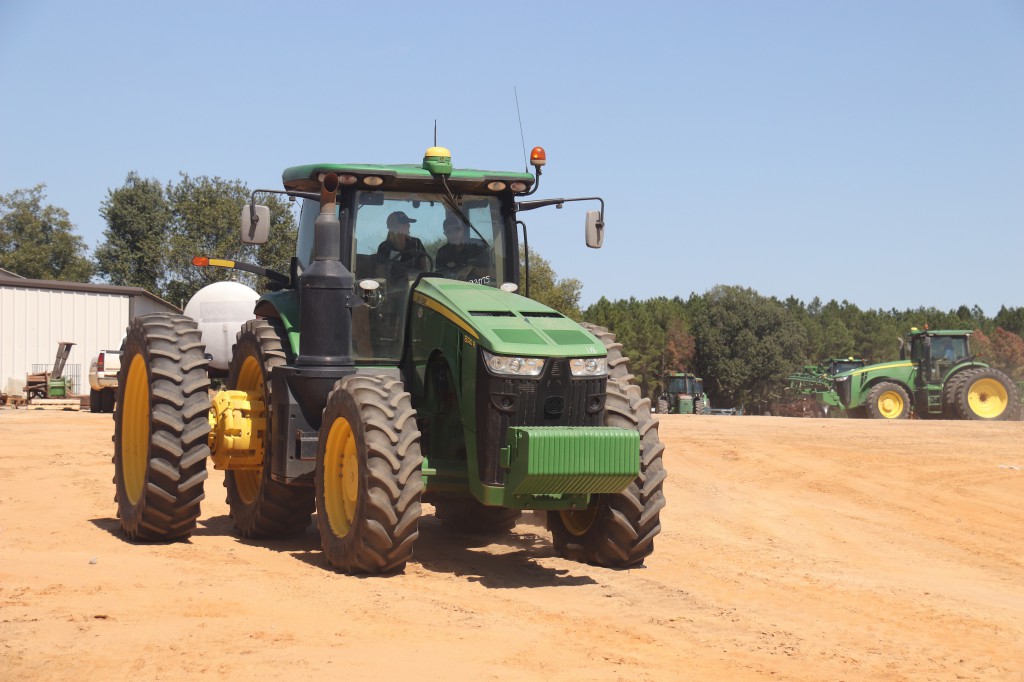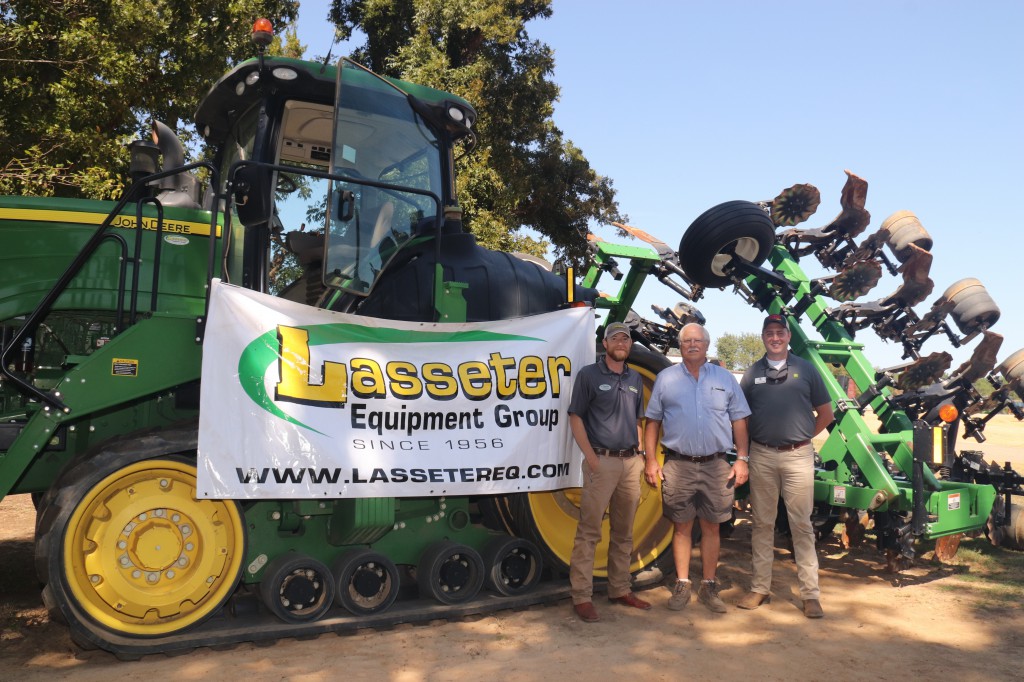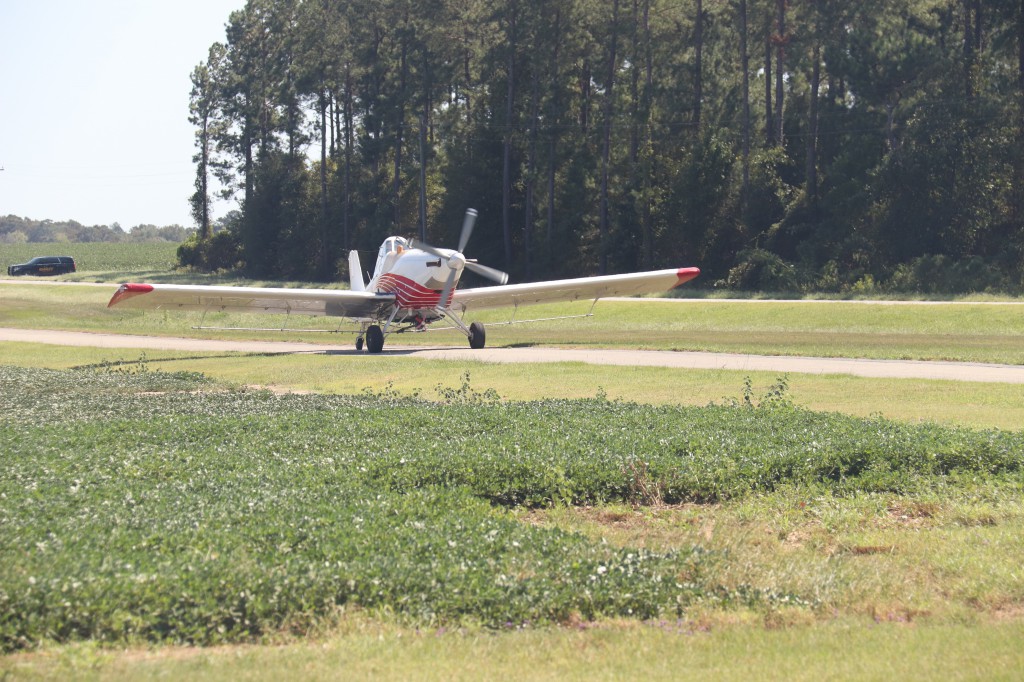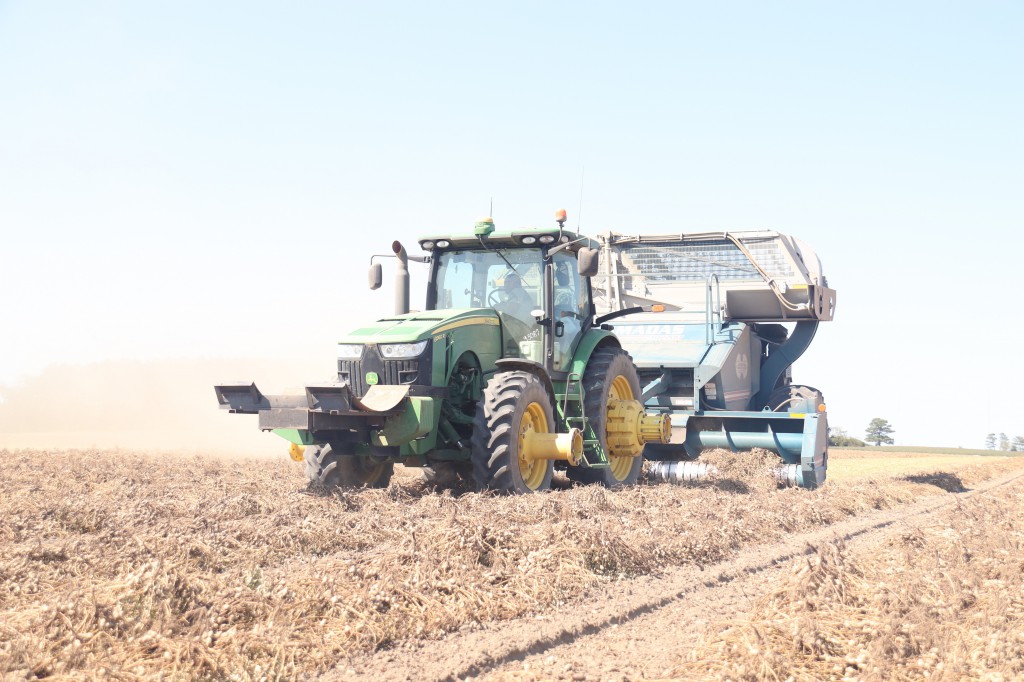The Georgia Peanut Tour introduced an on-farm precision agriculture stop at Dawson Brothers Farms in Hawkinsville, Georgia. During the visit Jason Thomas with John Deere and Dusty Engel with Lasseter Equipment Group LLC showcased several pieces of equipment used on the farm and explained their precision ag components.
This stop included most of the day to day precision ag equipment that is used on farms across the state of Georgia. While Dawson Brothers farms has a much larger fleet of equipment to display at this stop (including their own crop duster plane) this stop shows the level of integrated equipment used for the production of peanuts.
The first station on the stop included two John Deere eight thousand series tractors equipped with the newest John Deere 6000 GPS receivers. This receiver has only been available for two years, but it has been upgraded from the Star Fire 3000 receiver. The new Star Fire 6000 offers an increase in accuracy, a faster processor and a software update time to just three minutes compared to thirty minutes with the Star Fire 3000.
How it works: The Star Fire 6000 acquires RTK signal to keep the tractor on line and driving straight. RTK signal is the most accurate option offering sub inch accuracy from pass to pass. RTK accuracy is vital for our peanut farmers as they must use absolute precision when planting and digging peanuts to minimize damage to the crop. In a general sense, RTK signal is acquired from towers placed strategically around the state to get full coverage for farmers receivers to send and receive the signal. Another great thing about RTK is it offers the same accuracy year after year. This option gives farmers the capability to use the same lines after rotating a crop for a year or two and being able to return to the same line for that specific crop.
Another new product that was featured at this stop will be in the cab of the tractor. John Deere has released its new Generation 4 integrated display. This display is upgraded from the 2630 display that was released in 2010. The new generation 4 display moves away from the typical GS3 technology that most farmers have used or are still using today and it has made a lot of improvements for farmers in this region. While the 2630 gave the farmers an option to record and document their work it, it wasn’t as user friendly as the Generation 4. One major change for peanut farmers in the Generation 4 display is they now have the option to document peanut acres as “Peanuts”. The 2630 only offered a documentation tab as “edible beans” and not peanuts. With the new Generation 4 display peanut farmers have the option to properly document planted acres while using the “Peanuts” tab.
Another major change to discuss is the display in its self. John Deere did a very good job of upgrading this display to look similar to a cell phone or tablet. Cellular devices have a tablet style format to access your applications and the new Generation 4 display by John Deere offers this same layout. This makes ease of operation and navigation through the display incredibly easier for farmers and operators. To put this in perspective. With one tap of the screen farmers can now access all of their programmed implements to quickly switch their choice of operation (planting, Spraying, tillage or harvest) and then one tap of a button to return to their home screen. The 2630 display did not offer this as farmers had to navigate through pages of documentation set-up just to make a minor change. This display saves time for farmers and improves documentation data for the farmers.
The Second station displayed a new John Deere 4030 self-propelled sprayer also equipped with the new Generation 4 display. This sprayer is equipped with a lot of new features in the cab that have eased the operation of applying herbicides, pesticides and fungicides to the peanut crop. A main high point to talk about is the new hydro handle that has been upgraded inside the cab. The idea of the new hydro handle is to give the farmer the capability to control everything on the sprayer without having to touch the display or the console keys. The new handle offers options to move left or right as the sprayer drives autonomously down the row, turning sections on and off with a click of a button, and navigating through the display.
One of the main things on display at this stop was seeing the section control technology. Section control technology is programmed on the sprayer and its main purpose is to eliminate over spraying or over applying a product. The spectators got to see the sprayer spray a full broad cast spray up the row and then as it came back down the row the sprayer would cut off in sections to prevent overlap. While that’s going on outside the cab, inside the cab is another story. The operator can also see where he applied via the display in the cab. As the operator drives the sprayer, the screen is painting the field blue where he has already applied. This lets the operator know that he has already applied there, but if he misses a spot the screen will not turn blue. This lets the operator know to go back over that spot and apply again. This technology is a major game changer in our industry. It lowers cost and risk to damage the crop by not over applying, but it also lowers the risk of missing spots in the field.
Following the precision ag demo, attendees were able to see a crop dusting demonstration and visit a peanut field where Dawson Brothers were harvesting peanuts.




